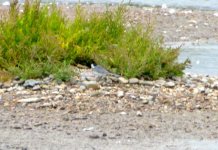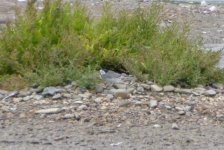upstarts1979
Well-known member
Red-backed Shrike Lanius collurio
A number of visitors today asked about the status of Red-backed Shrike at Upton Warren. Hostorically the species was widespread in Worcestershire in the nineteenth century but last bred in the county on the Malvern Hills in 1962. In modern recording times there have been four records: There have been three records:-
11th September 1966 - male (Paul Hyde)
18th June 1977 - male at the Moors Pool (Arthur Jacobs, Roger Maskew)
3rd October 1999 - juvenile at the Flashes (Jim Roberts et al)
14th September 2015 - female at the Flashes (Phil Wood, Andy Pitt)
Unfortunately little is known about the historic 1966 record. The second sighting and the first since Upton Warren became a reserve, a full spring male, was seen in the field alongside the track to the Moors farm house and barn conversions. The 1999 bird was found during the first work party of the 1999/2000 programme and stayed just the one day, from its discovery at 3:00 pm until dusk, giving just reward to those work party regulars who frequently give up their time to help develop the reserve – in total 40 to 50 birders managed to see the bird. John Belsey’s description of the bird published in The Birds of Upton Warren 1999 was as follows:-
Size: An inch or so bigger and heavier, with a proportionally larger, more rounded head than a nearby Reed Bunting and appearing “bull necked”.
Plumage: Its head was mid-brown with fine crescent markings, more predominately on the forehead (best seen when close to). From a distance a facial mask was apparent, formed by darker brown feathers on the lores and ear coverts. The nape, coverts, mantle and remiges were all fairly uniform mid-brown, liberally scattered with obvious small dark and pale crescents, being more extensive on the wing coverts. The tail was fairly long and frequently cocked, being mid-brown with a brighter base and rump that appeared to have a chestnut wash and darker crescents. The under-parts appeared to be a buffish off-white colour with brown crescents on the upper flanks, the rest appearing uniform and clean. An obvious long, broad white crescent separated the head from the shoulders.
Bare parts: The eyes were dark brown. The bill was dark brown at the tip with a pale yellowish base. At times it fed in a flycatcher fashion, hovering and darting to catch bees and other insects.
I spoke to Paul Hyde yesterday, I didn't realise he had found that one in 1966. I will ask him next time I see him.






